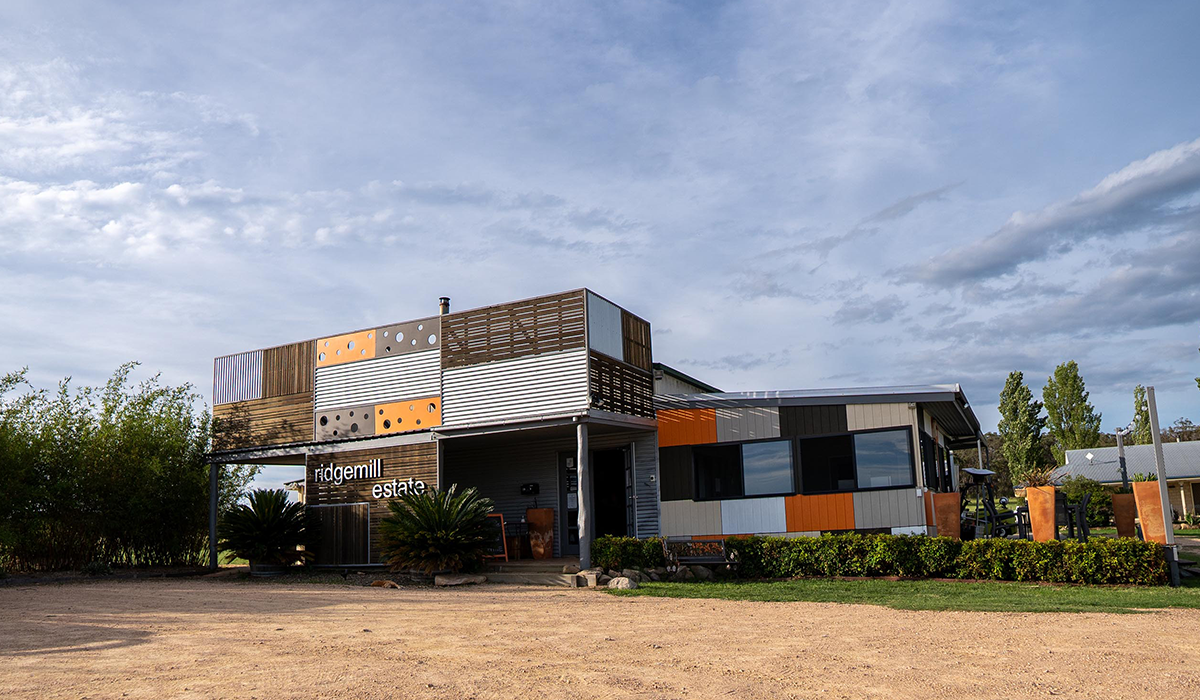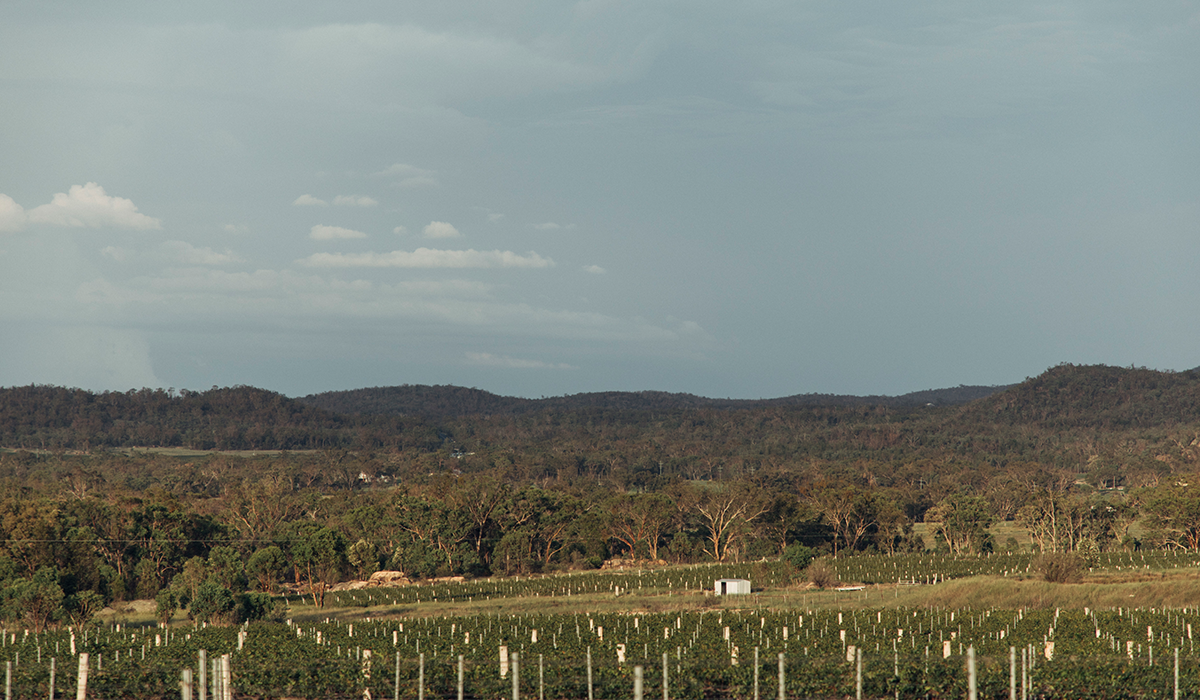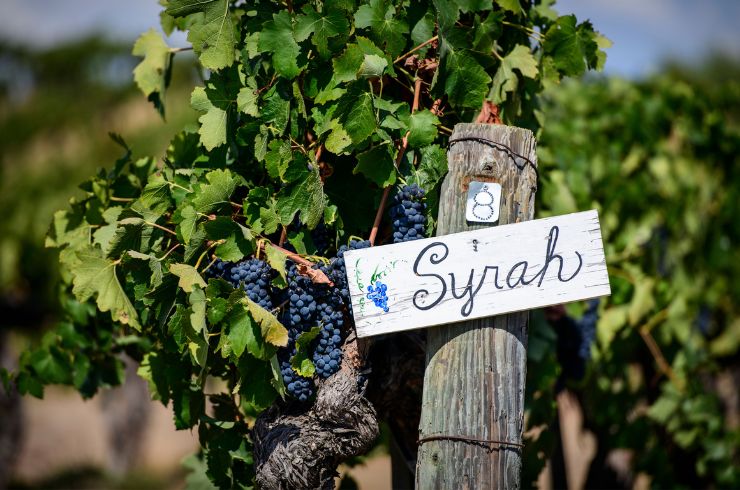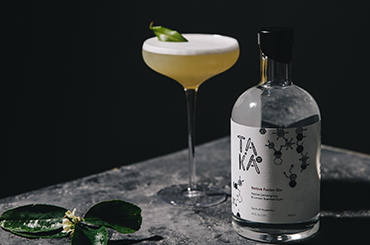Granite Belt is a wine region often unfairly maligned, overlooked and misunderstood. For many, thinking about Queensland and wine and an array of tropical fruits come into snap focus. So too luxurious stretches of sand, rainforests, crocodiles at estuaries with hot days, steamy afternoons and evening downpours. If applying a general ideal about climate, Queensland has pitched itself as a place that table wine grape growing is somewhat antithetical.
The wine growing region of the Granite Belt dispels most of these characterisations. Indeed, a visit to the area and with a squint you could be in northern Victoria, with thatches of native forest, outcrops of rugged granite and undulating hillsides aplenty. There’s a rugged Aussie outback feel to Granite Belt albeit bucolic, particularly when you catch it at its most verdant, though even when its dry and stripped back there’s a distinction that sets it apart from most of the rest of the Queensland.
Set on a plateau of the Great Diving Range, the Granite Belt arose from molten rock that was brought to the surface around 240 million years ago. Granite was the result and is a ubiquitous and omnipresent presence in the landscape, from giant boulders to quarries and through to cricket ball sized lumps, the hard mineral defines vistas and lends a strong visual character to the area.
Dispelling perceptions of Queensland’s sun-kissed, tropical visage are the dual environmental factors of elevation above sea level and temperature. While the region may swell from higher peaks to lowlands, the vineyard plantings are set mostly between a vertiginous 750 to 900 metres in elevation, with some sites tipping over 1000 metres above sea level and putting them firmly into the upper reaches of table vine growth in the country.

Summer visits are often recommended with winter gear stowed for the cool nights – indeed, the diurnal swing in Granite Belt in summer can be up to 28 degrees between day and night-time. Snow in winter is a potential hazard, while spring’s chill poses a grim potential for frost.
Winemaker Peter McGlashan from Granite Belt’s Ridgemill Estate has created great interest in the region’s weather, regularly updating social media with screen shots of comparative weather zones. McGlashan clips the daily temperature range of Granite Belt’s central town of Stanthorpe compared to Mornington, Healesville (Yarra Valley) and Canberra, creating a quirky bellwether that often has Stanthorpe as one of the coldest of the quartet, particularly during autumn and spring.
While climate and geography are nullifying some of the misnomers of the region, another would be the relative maturity of the wine culture of Granite Belt. Again, those unaware may reel in knowledge that the first grapevines planted with intent were farmed in Granite Belt, planted in 1859. While the local winegrowing culture didn’t burgeon, it continued quietly through mixed agriculture farms, particularly those of Italian migrants post WWII, with a reinvigoration happening in the mid-1960s.
The 1970s were halcyon years for the region with growth in plantings, an established core of wine producers and a famed visit from AWRI research scientist and educator Dr Bryce Rankine resulting in advancements in winemaking and growing technology, and introduction of new vine material.

Today, Granite Belt offers up some 60-plus producers covering some 50-ish grape varieties. Vinous prowess hasn’t quite made a national impact, but within Queensland the region is well-known and often visited as a holiday destination for ‘locals’. Listings in restaurants and bottle shops in larger urban areas have been patchy, while mailing list and cellar door sales have been the mainstay of loyalists to the region’s producers.
Very recent years have seen increased noise and a growth in reputation. The diversity of grape varieties has resulted in a potent and unique ‘alternative variety’ touring scheme under the banner of the Strange Bird Wine Trail, a self-guided tour that flits between 30-or-so cellar doors that tout everything from pinotage to petit manseng to saperavi and back to alvarinho.
The COVID-19 pandemic has also been a recent and significant impact on the region. While Queensland was comparatively unaffected by restrictions within the state, locals refocused attention on their own tourism. The affect was dramatic in Granite Belt, with record numbers visiting the wine region, and, importantly, getting high on their own supply.
Wine producers from the region almost universally acknowledge that Queenslanders didn’t just come and buy a bit of extra wine, they near wiped out their supplies, including back vintage wines that had at times struggled to move. Likewise, Brisbane wine industry gatekeepers moved on local stock, with Brisbane embellished with the relatively obscure but distinct wines of the region. A bonanza for the region’s winemakers, in no uncertain terms.

The bullrush on Granite Belt through the pandemic plus the impact of grape volume from the 2020 bushfires and general issues with drought have resulted in an overall short supply of wine. The result of this has been curious, if not a quibble that may undo some of the good work and rise in fandom for the region’s wines, with many producers sourcing additional from Riverland and Murray Darling wines regions to bolster their offering. The shifting of focus to outside region as the crosshairs are in place is a curious if not dangerous thing.
Indeed, a recent tasting in the region was striking for how many producers have gone this route, with some wineries showing more wines from Riverland or Murray Darling than they had on offer from Granite Belt itself! While quality of these wines was relatively high, so are the price points – producers from around the country sourcing from similar vineyards have long held pricing ‘appropriate to costs’, while Granite Belt wineries seem to be at odds with this affordability, selling wines at sometimes twice the recommended retail position to those based outside Granite Belt with the same variety from the same vineyard.
Locally, winemakers can’t quite put their finger on a signature or halo grape variety (or varieties!), though many will mumble tempranillo, shiraz or, more quietly, verdelho. Tempranillo is widely planted and made in a diverse array of styles, from rosé through to bright, vivacious nouveau styles and onto more oak-laden, concentrated ‘reserve’ releases.

Shiraz is excellent in Granite Belt, and distinct. The wines seem to emit a fog of black pepper and clove spice, even when unadorned or lightly seasoned with oak. The best sit at medium weight, show gravitas of firm and fine tannin and yet feel succulent and refreshing to drink. Verdelho might be the ever-present white variety but is largely produced without great detail and interest, albeit a handful of producers give the variety distinction with textural inputs from skins, lees time and barrel maturation.
Italian red varieties, when from the Granite Belt itself, have proved themselves intriguing, bright and littered with exotic spice. Sangiovese and nebbiolo both find tension from grippy, minerally tannins, at their best, and depth of fruit flavour without being overbearing. Petit verdot and tannat, with a select few saperavi wines, have also been highlights, where the warmer summers and cool nights through harvest allow for great depth and concentration of flavour with alpine herb nuance and cool sluices of amaro-tinged acidity for freshness.
Italian white varieties seem to be likewise appealing to red counterparts. Vermentino, pinot grigio and fiano are the focal point for discussion, with diversity and interest in winemaking approaches writ large. Judicious skin fermentation underpins a lot of the successful examples from this idiom, and again, those with phenolic pucker, lees detail and textural nuance from barrels seem to excel over those making droll, quick-to-market rapid-ferment, stainless and filtered/fined versions of such varieties (and other whites).
Best of the Granite Belt
Producers at the apex are a familiar roll call for those who have been wise to Granite Belt’s best offerings. Golden Grove Estate, Ridgemill Estate, Witches Falls, La Petite Mort/Bent Road, Ballandean Estate, Ravenscroft, Robert Channon, Heritage Estate and View Wine are the top billing for consistency and interest across recent tastings. A rear guard of great wines, albeit many of which are again from both in and out of Granite Belt region, have come from Jester Hill Wines, 4382 Terroir, Symphony Hill, Clovely Estate, Balancing Heart, Rokkwell and Settlers Rise Wines.
Golden Grove Estate is under the careful guidance of third generation Ray Costanzo. Costanzo has been quietly pushing boundaries with winemaking approaches, while respecting the unique site, diversity of varieties and age of vines on the family estate. Vermentino is a forte, tense and vibrant in its youthful expressions, intriguing with measured skin fermentation and refreshing and ebullient as a fizzy wine. Tempranillo, sangiovese and barbera are also fortes, with finesse and strong varietal template to the wines.
Ridgemill Estate under the affable Peter McGlashan veers between more line-and-length examples of mid-weight, savoury shiraz, textural and complex riesling, fine, minerally chardonnay and a raft of alt-expressions that run from skin fermented white-ish wines to joyful, summery, light weight reds. Similarly set, albeit perhaps more deeply invested in alternative winemaking approaches, Bent Road/La Petite Mort is the work of Robert Richter, Andrew Scott and Andrew Price – the trio frame Bent Road as, ironically, their neater and tidier, classic wine ranging, while La Petite Mort focuses on detailed, enriching, extended skin maceration white wines (orange wines), amphora-raised red wines and unique blends.
View Wine transcended through a recent tasting, with extremely compelling examples of mostly unseen varieties gros manseng and alvarinho. Textural, ethereal, savoury whites were on show, with succulence, refreshment factor and nuance of character the x-factors. Witches Falls leans into some of the lesser-sung varieties likewise, and though scintillating, minerally vermentino has been excelling, marsanne and verdelho deliver lip-smacking, briny acidity under supple fruit and faint nutty savouriness in varied measures.
Robert Channon and verdelho feel synonymous to me, with serious examples of the variety a calling card – textural chew, pithy and leaner fruit characters, savouriness as the positive variables here. ‘Classic’ varieties of pinot noir, shiraz, pinot gris and shiraz also hold merit and dictionary definition expressions are common and appealing. Ravenscroft Vineyard was originally the quarry of Mark Ravenscroft, but has recently changed hands into a dynamic young couple’s custodianship. Caitlin and Nick Roberts retain Mark as a consultant, but have immediately put their fingerprints on new releases, with fresher, vibrant, lighter-weight wines the new metier.

Ballandean Estate is one of the longest standing producers of Granite Belt and knows its quarry well, but delivers a diverse array of varieties albeit most are more classically styled. Shiraz is formidable, deeply flavoured and savoury, while nebbiolo, durif and saperavi flex the richness and concentration possibilities of the region, albeit all coddled in webs of lavish and palate-refreshing tannin.
Heritage Estate has thrust themselves into the limelight with bold expressions of various varieties, albeit pinot gris and sagrantino have been topflight from the chorus. Gris delivers proper generosity but with minerality underpinning it, while sagranitino is power and presence personified, with sublime balance.
The Granite Belt has runs on the board and is striding ahead with confidence. While the quibble of out-of-region wines looms as a possible undermining of this renaissance, the diversity of grape varieties, and ability to play without rules or expectations, is a strong benefit. The climate-appropriate varieties bolster this statement, and the resulting wines offer a cornucopia of flavours and textures to explore, for the uninitiated, to the cognoscenti.
Another strong marker is the relative higher quality of wine, defying once more regional expectations of ill-conceived opinion about the region, the state, and its relative position in Australian wine. The Granite Belt is exciting, full of wonder, a beautiful place to visit, and defined by its kaleidoscopic array of wines.
Image credit: Wine Australia.
Latest Articles
-
News
The power of perspective: Ryan Ponsford's Entropy
2 Dec 2025 -
Events
Halliday Wine Academy: Wine Immersion Tours
30 Nov 2025 -
Travel
Scenic's Southern France and Bordeaux river cruises are tailor made for wine lovers
30 Nov 2025 -
News
What’s in a name? The etymological origins of popular grapes.
30 Nov 2025




